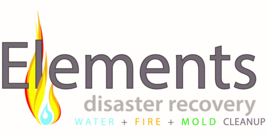Along with smelling bad and being unsightly, household mold can be hazardous to your health. Even if you have a healthy immune system, mold can cause sinus problems, coughing, wheezing, and throat, skin and eye irritation. And if you have serious allergies or chronic lung problems, like asthma, mold can cause dangerous health problems.
Mold can grow anywhere, but some places are prone to the fungus, especially anywhere that’s warm, dark and damp. Serious cases can require professional mold removal services, but knowing where to look for common household mold will help you treat and prevent it, and have a happier, healthier home. Below, we’ve listed the most common areas in your Jacksonville home to check for mold.
Shower and Bathtub
Everyone loves a long, hot shower, but unfortunately, so does mold. In addition to your shower and bathtub, mold can grow on your shower items, including your shower curtain, shampoo bottles and loofahs. The warm, wet environment is a breeding ground for the fungus, so try to properly ventilate your shower or tub after you use it. Opening a window and/or using a ventilation fan will help air them out, and if you have a shower door, leave it open after a shower. These areas should be inspected and cleaned regularly.
Sinks
The constant presence of water can cause mold to grow in and around your bathroom and kitchen sinks. Be sure to inspect around the facet head and base, sponges, toothbrush holders, and underneath the sink where moisture from cleaning supplies and leaky pipes create ideal conditions for mold growth. These areas should be inspected and cleaned regularly.
Toilets
Bathrooms are the most humid areas in your home, which can turn toilets into mold traps. Look for mold inside the toilet bowl (especially under the rim), in the toilet tank and around the toilet’s base. These areas should be inspected and cleaned regularly.
Refrigerator
Mold can thrive behind and under items and shelves in your refrigerator. It is also commonly found in the refrigerator’s drip pan. These areas should be inspected and cleaned at least every six months.
Indoor Plant Soil
While indoor plants help to beautify your home and improve its air quality, they are attractive places for mold. It will manifest as a white, fuzzy material on the surface of the soil. To prevent this, don’t over water your plants and ensure that your home is at an optimal indoor humidity level.
Window Ledges and Window Sills
Jacksonville is no stranger to thundershowers, and if you live in an older home or have sub-par windows, all that rain can cause mold to grow on ledges and sills. Even new windows can collect enough condensation for mold to develop. A dehumidifier can help prevent this, as well as opening your windows from time to time.
For questions and advice on mold removal and prevention, contact the experts today at Elements Disaster Recovery.

